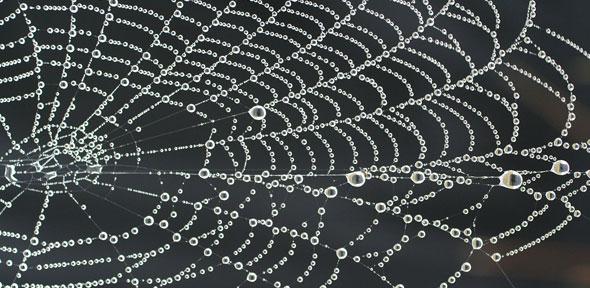The fibres, which the group claims could be used to make textiles, sensors and other materials, are “spun” from a soupy material called a hydrogel, which is 98 per cent water. The remaining 2 per cent of the hydrogel is made of silica and cellulose, both naturally available materials, held together in a network by barrel-shaped molecular “handcuffs” known as cucurbiturils.
The chemical interactions between the different components enable long fibres to be pulled from the gel. The fibres are pulled from the hydrogel, forming long, extremely thin threads – a few millionths of a metre in diameter. After roughly 30 seconds, the water evaporates, leaving a fibre which is both strong and stretchy.

Spider silk is one of nature’s strongest materials, and scientists have been attempting to mimic its properties for a range of applications, with varying degrees of success. “We have yet to fully recreate the elegance with which spiders spin silk,” said Dr Darshil Shah from Cambridge’s Department of Architecture.
“Although our fibres are not as strong as the strongest spider silks, they can support stresses in the range of 100 to 150 megapascals, which is similar to other synthetic and natural silks,” said Shah.
According to the team, the fibres are stronger than other cellulose-based viscose and artificial silks, as well as natural fibres such as human or animal hair. They also show very high damping capacity, meaning that they can absorb large amounts of energy, similar to a bungee cord. There are very few synthetic fibres which have this capacity, but high damping is one of the special characteristics of spider silk. The researchers found that the damping capacity in some cases even exceeded that of natural silks.
The research is reported in the journal Proceedings of the National Academy of Sciences.




Project to investigate hybrid approach to titanium manufacturing
What is this a hybrid of? Superplastic forming tends to be performed slowly as otherwise the behaviour is the hot creep that typifies hot...